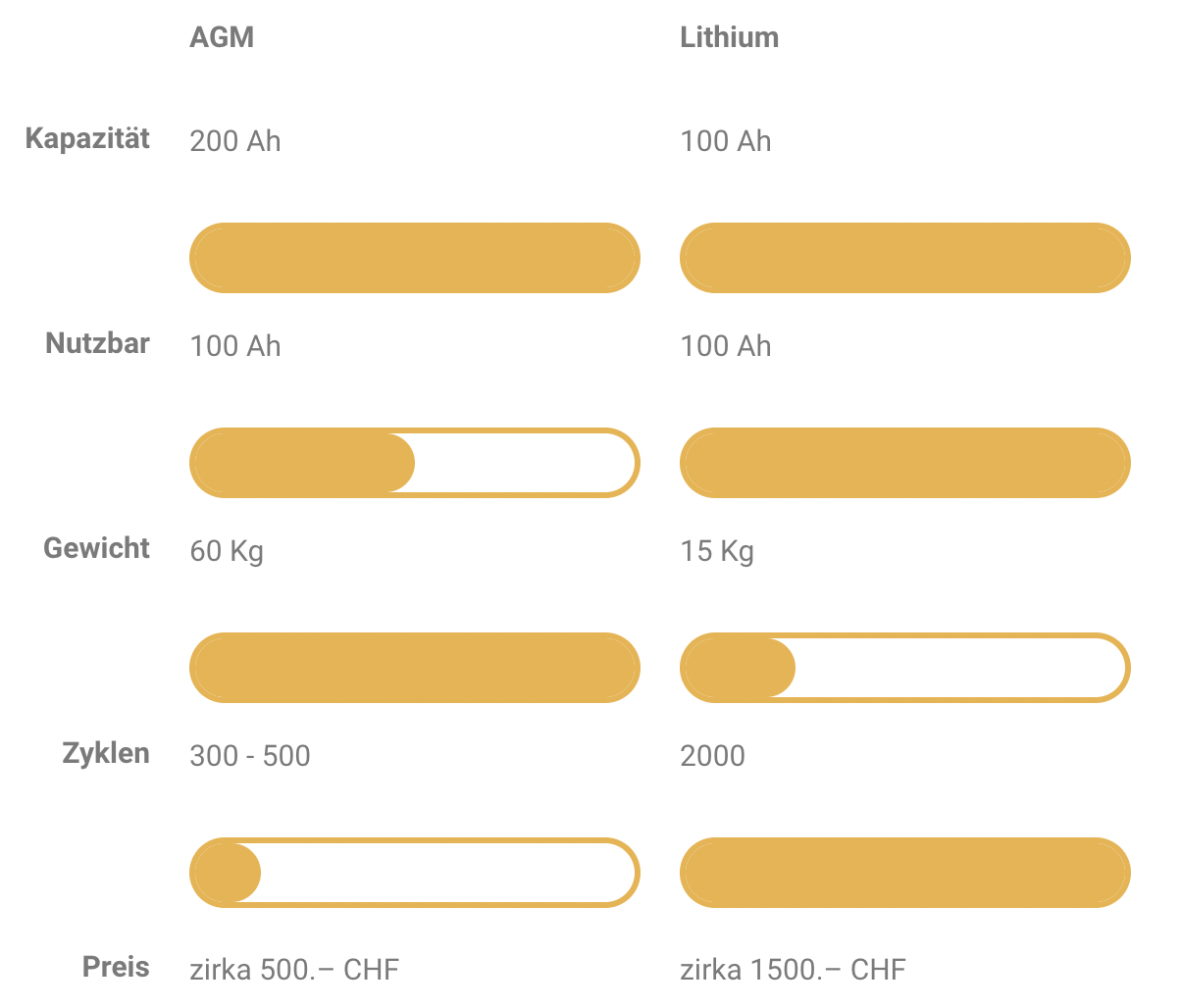A solar system basically consists of four main components. But there are several different versions of each of these. These are compared and explained in more detail in the following sections.
Flexible Solar Panel vs. Monocrystalline Solar Panel vs. Solar Suitcase
The flexible solar modules can also be installed on round roofs without any problems. Vollbild The monocrystalline solar panel on the sunny side of the alpine hut is attached to the wall using brackets. Other mounts are used for on the car roof. Vollbild Solar can also be used with a solar case without a fixed installation. full screen
These are different construction methods of solar panels. All of these construction methods are suitable for use in the camping area, since all are weather, weather and vibration resistant. Flexible panels are thinner and lighter than traditional rigid monocrystalline panels and can be mounted directly to the roof without a bracket. The rigid solar panels are cheaper than the other types of construction, and an additional bracket is required for attachment. We refer to foldable solar panels as suitcases. These look like bags or suitcases and can be easily transported and stowed away. You can unfold these cases anywhere and use the included connection cables to charge your battery or generator.
MPPT (Maximum Power Point Tracking) vs PWM (Pulse width modulation) charge controller
MPPT (Maximum Power Point Tracking) charge controller full screen PWM (Pulse width modulation) charge controller full screen
Both charge controllers are used to charge batteries. The PWM is a simple and easy regulator that pulls the voltage of the system down almost to the voltage of the battery. The MPPT is more complex, it calculates the input voltage and always adjusts it so that the system can provide maximum performance. Depending on the climate region, you can get up to 35% more yield with the MPPT charge controller than with the PWM controller.
Lithium vs. AGM battery
Lithium battery (LiFePO4) full screen AGM battery full screen
Gel or AGM batteries are widely known. They are inexpensive, maintenance-free and reliable energy storage devices which have been used in camping for many years. The more modern lithium technology is an alternative. LiFePO4 batteries (lithium) have very powerful and high-quality cells inside. As a result, LiFePO4 batteries are priced higher, but they are longer lasting, smaller and lighter.
capacity
Usable
Weight
cycles
Price
AGM
200 Ah
100 Ah
60kg
300-500
around 500 CHF
lithium
100 Ah
100 Ah
15 kg
2000
around 1500 CHF
AGM
Capacity 200Ah
Usable 100 Ah
Weight 60 kg
Cycles 300 - 500
Price around 500 CHF
AGM
Capacity 200Ah
Usable 100 Ah
Weight 60 kg
Cycles 300 - 500
Price around 500 CHF

lithium
Capacity 100Ah
Usable 100 Ah
Weight 15 kg
Cycles 2000
Price around 1500 CHF
Pure sine vs modified sine inverters
Pure sine wave inverter Full screen Modified sine wave
These are construction types of inverters. The sine function is generally used to describe a harmonic oscillation. Pure sine gives a nice smooth curve/current delivery, this is especially important if you want to charge battery powered devices. A choppy curve/current output is provided for the modified sine wave. This can be sufficient to operate simple devices, but rechargeable batteries and batteries are damaged over time with this technology.















